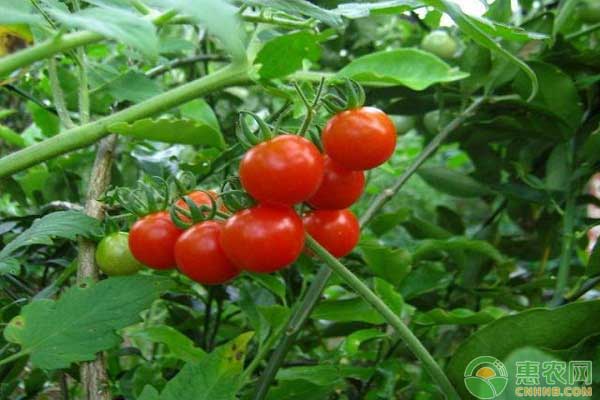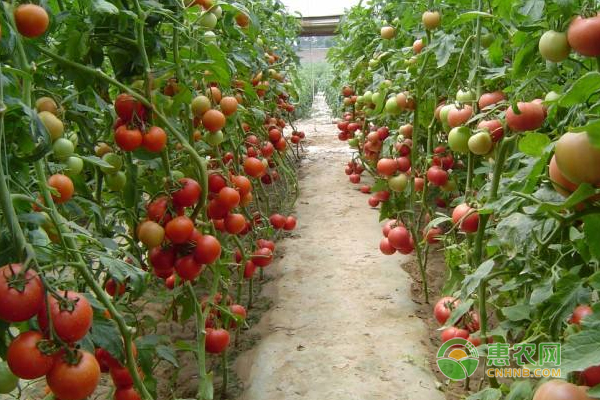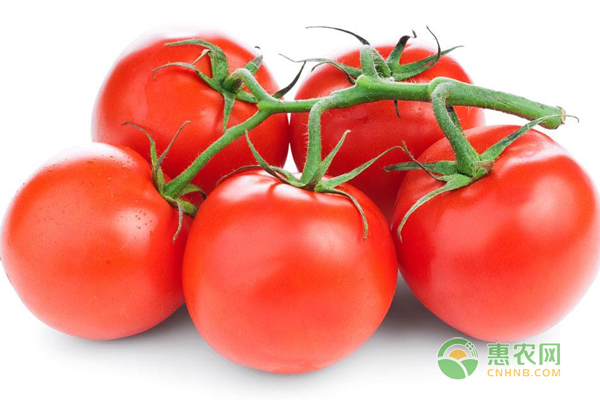In order to promote the high quality and high yield of tomatoes, greenhouse tomatoes are constantly researching new cultivation methods. Today, Xiaobian introduces a tomato "U" shape cultivation technique. When the fifth panicle of the main stem is changed from green to white, the main arrow of the tomato is bent from the middle, and the head of the trunk is bent to the ground, so that the stem of the plant grows in a U-shaped shape. Let's take a look at the key points of the "U" shape cultivation technique of tomato.

1.1 Sowing date
The sowing time of winter and spring tomatoes is more suitable from early September to mid-September. Seeds should be sterilized, soak them in warm soup: pour the seeds into warm water at 52 °C for 20 minutes, then rinse with water, or use 40% seed dressing with 0.2% seed weight. The shed should be disinfected. One month before the seedlings, the residual branches and leaves in the greenhouse should be cleaned up, burned or buried deeply. The soil in the greenhouse is filled with water, then covered with a mulch film, and the greenhouse is buckled with an old membrane to carry out a high temperature shed. High temperature disinfection by sunlight can reach 60~70 °C, effectively killing some pathogens in the soil. If you do not shed the shed, you should try to use new soil seedlings. If you use old soil, you should use the 50% carbendazim WP 8g/m2 and the nutrient soil 10kg to mix the medicinal soil for seedling. First, the bottom water is first poured on the seedbed. After the water seeps, take 1/3 of the soil on the bed, sow the seeds of Cuihaoya, sow 10~15g/m2, and then the remaining 2/3 of the soil. Covered above (about 1cm thick), the seeds are sandwiched between the herbs and have a shelf life of more than one month. Before planting or before planting, the greenhouse should cover the film, uncover the front apron, and stay up all night.
1.2 Management
The temperature during the daytime before emergence is controlled at 25-28 °C, 18-20 °C during the night, 15-17 °C during the day after emergence, and 10-12 °C during the night, which is conducive to root development and control of the upper part. At the time of emergence, the temperature is higher. In addition to staying up late, the mud should be sprayed on the roofing membrane or covered with a sunshade net to reduce the light and make the temperature drop. When the first true leaf appeared, the daytime temperature increased to the same as before the emergence, 25 to 28 ° C, and 15 to 18 ° C during the night. In order to prevent the occurrence of squatting, spray Pulik and spread the ash. If it occurs, it can be sprayed with chlormequat or B9 of 1500-2000mL/kg or paclobutrazol of 75-100mL/kg, and can be treated once in each of 2 leaves and 1 heart. The seedling stage should strengthen water management, soil moisture should not be too dry or too wet; should also pay attention to prevent the occurrence of pests and diseases, such as viral diseases, leaf mold, early blight, whitefly, red spider and so on.

2 colonization
2.1 Site preparation of base fertilizer
For every 667m2 of high-quality farmyard manure above 20m2, the applied farmyard manure must be fully decomposed. The amount of chemical fertilizer applied: diammonium 50kg, potassium sulfate 40kg, superphosphate 50kg, according to the actual soil conditions, add micro-fertilizer, promote soil testing formula fertilization, Increase the application of enzyme fertilizer and humic acid fertilizer to promote the robust growth of plants. 2/3 application, rotary tillage, deep fine. According to the 50cm small line spacing, 60cm large line spacing ditch, 1/3 of the fertilizer is applied into the ditch, water is irrigated by the ditch, and the water is oozing and ridged. The ridges are lumped to cover the mulch, and the mulch is covered on the two ridges of the small row spacing.
2.2 Colonization method
Winter and spring tomatoes are generally planted in the middle and late November, and no later than the beginning of December. On the ridge platform, the mulch was pulled open with a blade of 30 cm, and the hole was shovel with a transplant shovel. One plant per hole was planted, and the seedlings were planted with the same size. The upper surface of the nursery is 3 to 4 cm below the ridge, and a small part of the soil is buried, and the water is poured. After the water seeps, the cover is sealed and the mulch is tightly covered. The number of planted seedlings was 3,500 to 3,700 plants/667 m2.
3 Post-plant management
Improve the light intensity, wipe the roofing film after uncovering the straw curtain every day; hang the reflective screen; temperature adjustment, slow seedling period does not exceed 30 °C, do not let the wind, maintain a higher temperature, to ease the seedlings. The most suitable temperature for controlling photosynthesis after slow seedlings is 20~25°C during the day and 10-15°C during the night, which is beneficial to the balance of vegetative growth and reproductive growth, suitable for flower bud differentiation; fertilizer and water management, in order to make the seedling grow rapidly, Lightly pour water once, combine with 10~15kg of ammonium nitrate or diammonium phosphate, or 5kg of magic grain and 5kg of nitrogen fertilizer, and pour into the dark ditch with water. When the first ear is already solid, the second top dressing is carried out when the fruit begins to expand. The urea is 15-20 kg per 667 m2, the superphosphate is 20-25 kg, and the potassium sulfate is 10 kg, combined with irrigation. After each 2 spikes, the fruit will be chased once. When topdressing is combined with irrigation, during the growth period, according to the growth of the plant, the irrigation should be carried out, and the drought should be avoided.
4 plastic points
4.1 The first cut leaf
When the third ear is close to maturity, the old leaves below each ear are removed, leaving a petiole of 5-6 cm, so that the nutrients of the root are all transported to the fruit, avoiding the leaves and the fruit competing for nutrition.
4.2 shaping, finalizing
When the 5th ear grows to the size of the walnut, the tomato stalks at noon are sturdy, and the head is bent into an n-shape, paying attention to the head. When the 10th ear is sitting, remove the growth point. Head down to concentrate the nutrients on the fruit and ripen the fruit early.

4.3 2nd leaf cutting
The longer the fruit grows, the longer the leaves are, the better the photosynthesis is. The leaves not only consume more nutrients, but also tend to get sick. At this time, the leaves are removed, leaving only 4 or 5 new leaves, so that the nutrition will be concentrated. On the fruit, the fruit matures and harvests in time, and the output can generally reach 3000kg, up to 10000kg, which improves economic benefits.
Inverted U-shaped method of cultivating tomatoes is simple in operation, long in growth cycle, labor-saving and time-saving, and can also achieve high yield, which is worthy of learning by farmers.
COVID-19 Infectious Disease Test Kit
Corona viruses are enveloped RNA viruses that are distributed broadly among humans,other
mammals,and birds and that cause respiratory,enteric,hepatic and neurologic diseases.
COVID-19 infectious diseases test Kit
NINGBO AUTRENDS INTERNATIONAL TRADE CO., LTD , https://www.metests.com